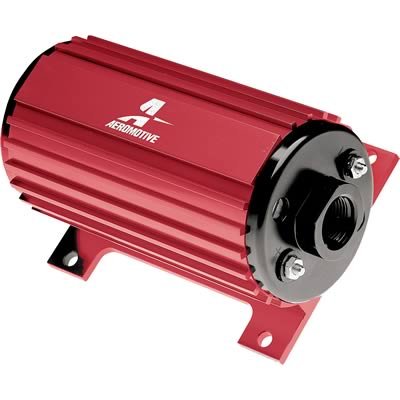David, are you really going to need that much fuel? What about when you're idling - is your return line sized large enough for 600 lb/hr fuel to return to the tank?
That's sure a lot of fuel being recirculated, stirred up, and heated up......
At Cat when we ran diesel engines on the dyno we had to install a fuel cooler because the engines wouldn't make their rated power due to all the fuel being recirculated & heated up.
I think the OEM's have a better approach with PWM'ing the fuel pumps. At idle the pump gets around 9 volts (60-65% duty cycle), and on load, the fuel ECU kicks the voltage up to the full 13.6 alternator voltage.
Do you know that the stock Supra fuel pump can deliver over 800 HP worth of fuel @ 90psi, if it's run at 18 volts? Some will say "No you can't do that all the time, you'll burn up the pump!" That's rubbish; you only boost the voltage to the pump for 5-10 seconds maximum. Realistically, how long can you hold an engine at WOT?
I have a 3 step voltage system for my Supra, where I take the standard alternator voltage and PWM it to 9 volts for the fuel at idle and low load, then when I go on low boost, I give it 100% duty cycle or 13.5 volts, then when I pass 10 psi of boost, I kick the voltage up to 16 volts with a Kenne Bell Boost-a-Pump. This system has been working flawlessly for the last 5 years (albeit not many miles), and I've not burnt anything up at all.
Back in 2003, my Dodge Stealth buddy, Jeff Lucius, & I collaborated on a fuel pump test because we were both curious what different pumps would do. I was especially curious what they would do with higher voltages. The results of the testing are here:
http://www.stealth316.com/2-fuelpumpguide.htm
And here is the summary of the Supra fuel pump output:

